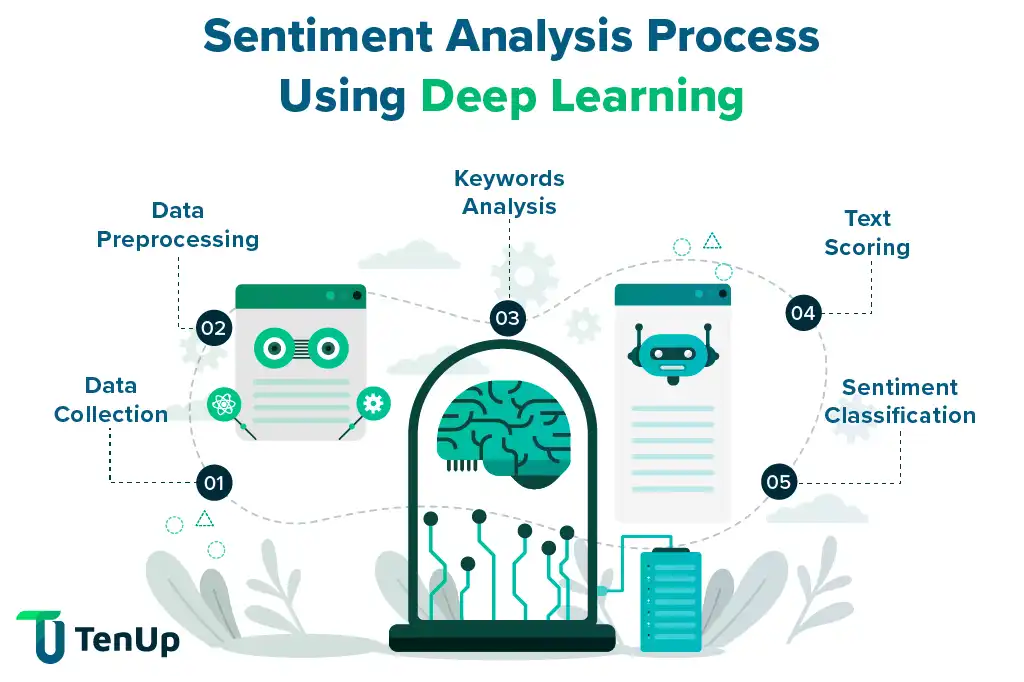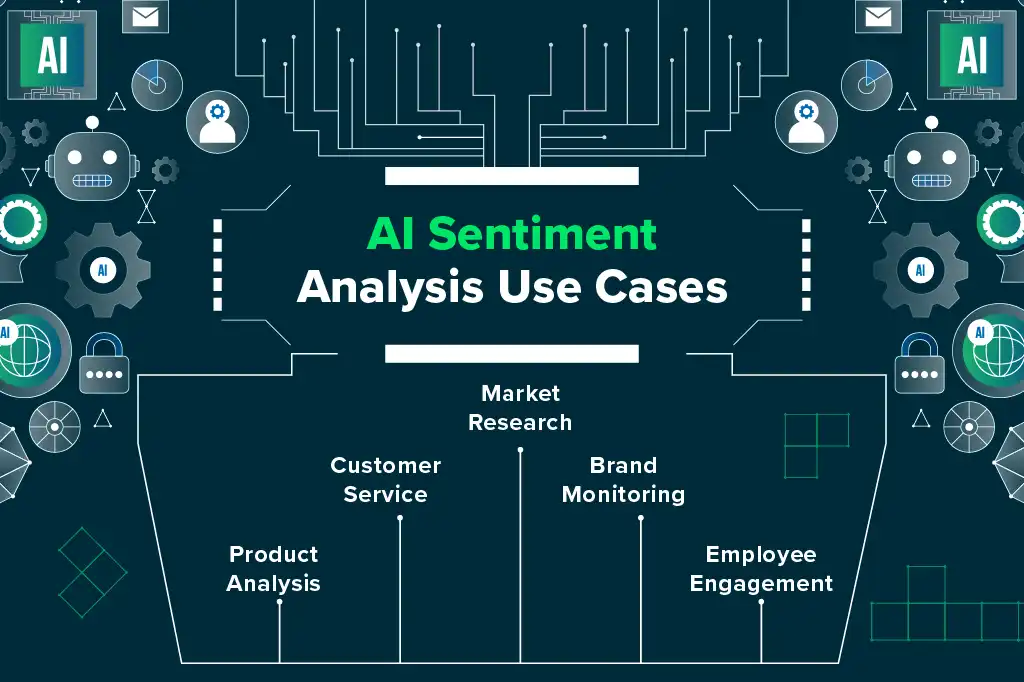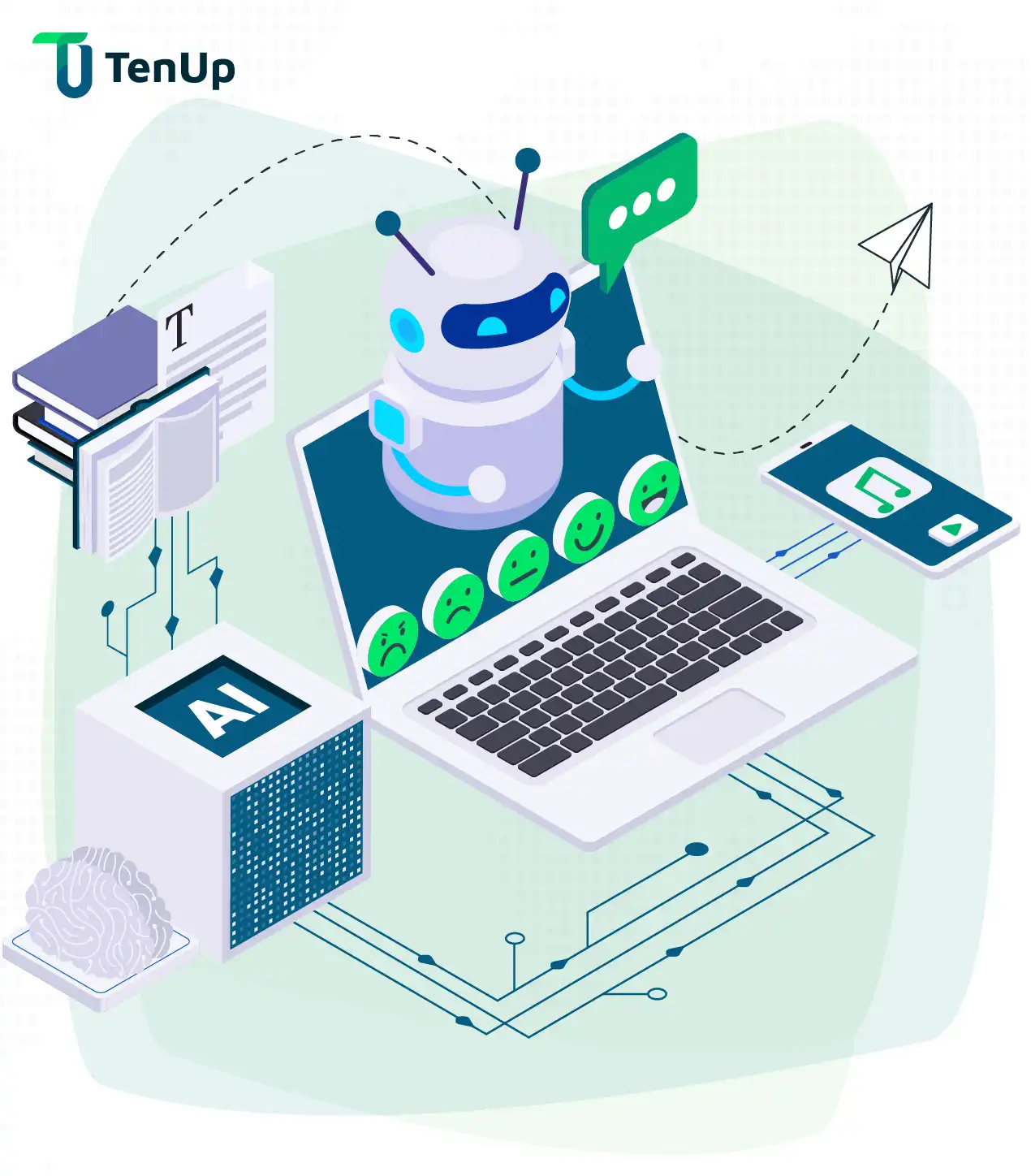What is AI Sentiment Analysis? A Complete Guide to Understanding Customer Emotions
AI Sentiment Analysis is an advanced Natural Language Processing (NLP) technique that helps businesses understand customer emotions by analyzing text data, such as feedback, reviews, and social media comments. Often referred to as Opinion Mining, it identifies the sentiment behind customer interactions, categorizing them as positive, negative, or neutral. This technology allows companies to gauge customer satisfaction, track brand reputation, and pinpoint specific issues that affect customer experiences. By detecting emotions, attitudes, and intentions within text, businesses can make informed, data-driven decisions to improve products, services, and customer engagement. AI Sentiment Analysis plays a crucial role in enhancing customer experience and optimizing brand strategies.
AI-driven Sentiment Analysis utilizes Deep Learning algorithms to handle complex conversations involving language nuances, contexts, and multiple domains. So, it can ascertain if a text is:
- Positive, negative, or neutral
- Emotion is happy, sad, angry, joy, surprise, etc.
- The matter is urgent or not urgent
- Intent is interested, not interested, etc.
Businesses can also use sentiment analysis internally within the organization to determine the attitudes of their employees. Sentiment analysis helps organizations identify areas of improvement while spotting what’s working and what’s not. Deep Learning algorithms require rigorous training on large data sets. Sentiment-based labels are incorporated within these data sets. So, the algorithms can correlate specific sentiments with certain phrases or words, even in new data.
The process of sentiment analysis using Deep Learning is highly systematic. It includes the following five steps:
- 1. Identifying and collecting the data to be analyzed.
- 2. Data Preprocessing, including steps like tokenization, stop-word removal, and lemmatization, to identify keywords that highlight the text’s meaning.
- 3. Analyzing keywords using ML and NLP algorithms that can automatically extract text features, which, in turn, help in identifying sentiments.
- 4. Scoring the text using rule-based, automatic (ML and Deep Learning), and hybrid ML (rule-based and automatic) models.
- 5. Sentiment classification by assigning a sentiment score to the text using the selected model. The score could be assigned as positive, negative, neutral, or other parameters suitable for a particular use case. Also, the sentiment score can be assigned at different levels, like document, sentence, and sub-sentence levels.

So, businesses can use sentiment analysis to make sense of text, image, and video content from social media, customer feedback, product reviews, surveys, emails, and other online sources. It helps them scale analytics and gain accuracy in results while removing human bias and subjectivity.
6 Key Types of AI Sentiment Analysis for Deep Customer Insights
Different analyses produce varied results, depending on their types. So, businesses usually employ more than one type of sentiment analysis to get desired insights. Let’s explore different types of sentiment analysis and when they should be used.
-
Subjectivity Classification: This type of sentiment analysis is the most basic and works in two ways. One way is analyzing text to classify opinionated and not opinionated sentences. The opinionated sentences are further classified into ones expressing positive or negative opinions.
The second way of subjectivity classification includes classifying a sentence or phrase into subjective or objective. The subjective sentence or clause is further classified into expressing a positive, negative, or neutral opinion. So, it quantifies the level of factual information and personal opinion contained in the sentence. And then classifies the opinion.
For example- Let’s consider this statement, “This picnic spot is beautiful, and I’m enjoying it here”. This is a positive opinion expressed by a traveler on a picnic spot.Also, subjectivity classification filters out all the neutral statements thus preparing the data for polarity classification.
-
Polarity Classification: It helps classify opinions into positive and negative. By adopting the multiclass approach, advanced ML models can be used to solve both subjectivity and polarization tasks. It helps identify sentiment intensity by fine-graining and categorizing opinions into more options like very positive, somewhat positive, neutral, somewhat negative, and very negative. The opinions are polarized by numerical ratings called the sentiment score. These could be between 1 to 10 or 0 to 100. For instance, on a scale of 1 to 10, a customer rating of 1 or 2 could be considered very negative.
So, subjectivity and polarity classifications can be used by businesses to identify positive and negative trends in customer feedback. While this approach identifies the intensity of sentiments, it cannot identify different aspects of sentiment. This brings us to the next sentiment analysis type.
-
Aspect-based Sentiment Analysis: Also called feature-based sentiment analysis, it helps identify what customers feel about the varied attributes of a product like its design, performance, price, etc. For example, “The battery life of this mobile phone is too short”. Here, the business can understand that the customer sentiment on the battery life of their product is negative.
So, text fragments containing varied aspects undergo polarity classification in this type of sentiment analysis. The results are combined and scored for a particular aspect to determine the trend.
Aspect-based sentiment analysis helps businesses gain valuable insights into what aspects of their products and services are driving negative or positive customer sentiments.
-
Emotion Recognition: NLP and other AI models are trained to understand the emotional state of writers or customers within their text communications like anger, fear, worry, or happiness.
This type of sentiment analysis uses complex algorithms to analyze emotions intricately rather than placing numbers or black-and-white scales to feedback. Even though this type is comparatively new, it is fast growing due to its many applications.
For instance, AI-powered customer service agents can deliver more appropriate and empathetic responses after understanding the emotion behind a customer’s text message. Another popular use case of this type includes social media monitoring.
-
Intent-based Sentiment Analysis: This type of sentiment analysis focuses on understanding the objectives or intentions of the writer behind a text. Understanding the purpose of communication helps bring better and faster resolutions to issues.
For instance, businesses need to know if a website visitor is casually browsing or is interested in products and services with the intent to buy. It helps them focus their marketing efforts to the right audience.
Similarly, a customer service bot must understand if the customer is asking for help or intends to purchase another product. This improves customer satisfaction. So, the AI algorithms identify if the intent behind the text is to query, complain, or command.
-
Fine-grained Sentiment Analysis: Fine-grained Sentiment Analysis: While there are several differing definitions of this type of sentiment analysis according to its applications, it can be used to solve complex issues.
At its best, it combines aspect, emotion, and intent-based sentiment analysis to provide accurate outcomes. Here the AI models are trained to take a lexicon approach to sophistically handle complex and confusing language nuances.
For example, take a look at this statement. “The cake was bad but looked delicious.” Here the customer feedback is at two levels. A negative sentiment for how the cake tasted and a positive one for how it looked.
Seeking to utilize AI for Business Growth?
We have technical and service expertise in developing custom-designed AI-powered solutions to resolve your unique challenges.
Top 5 Use Cases of AI Sentiment Analysis for Business Growth
We’ve already touched upon some applications of sentiment analysis while trying to understand their types. Let’s delve into the areas where AI-powered sentiment analysis is widely used.

-
Product Analysis: Successful products collect consumer feedback and improve features at every stage from MVP development to post-launch. They need to understand which part of their product customers particularly like or dislike. So, it helps to utilize AI technology to identify different topics and aspects within the feedback text and identify sentiments quickly and effectively.
-
Customer Service: Customer satisfaction and high retention rates define the success of a company’s customer service efforts. It's not just what they deliver but how they deliver it that could make all the difference. With the increasing trend of utilizing chatbots and even customers expecting them, it is important to equip them with sentiment analysis capabilities to deliver more human-like responses. It also helps direct the queries to the right department for faster resolutions and monitor the employees’ service quality.
-
Market Research: Sentiment analysis is widely used to conduct competitive analysis and all kinds of market research, be it industry, product, or trend-based. The ability to quantify and decipher qualitative information can help businesses venture into new markets, spot hidden opportunities, and benefit from trends. Active listening into what people talk about on different platforms and understanding the sentiment is the key.
-
Brand Monitoring: It includes social media monitoring and analyzing other platforms like forums where customers share their feelings about their interactions with your brand. Analyzing blogs, news sites, etc., also helps identify incidents that impact brand image. Recognizing customers' opinions about the brand helps optimize the marketing strategy and analyze competition to create an edge in the market. It also assists in evaluating how the brand voice and image have evolved over the years.
-
Employee Engagement: Sentiment analysis can be applied to HR processes for workforce analysis. So, businesses can measure employee satisfaction and identify both positive and negative factors impacting their performance. It helps them address employee concerns early and formulate strategies to improve employee experiences. This continuous process helps spot when employee sentiment changes and why.
How TenUp Helps Businesses Leverage AI Sentiment Analysis for Success
While AI-powered sentiment analysis is already helping businesses in many ways, it is fast-evolving to find multiple applications in almost every industry. And this trend is here to stay as it is a power to analyze customer sentiment at scale and use it for fast business growth. AI experts can provide innovative solutions to critical business problems by correctly utilizing this technology. Explore the wide range of services we offer including AI Engineering with special emphasis on NLP services. Our talented team can formulate the right mix of services and technologies to build customized solutions for specific industry and business model needs.
Need to build Sentiment Analysis capabilities?
Backed with domain experience in serving multiple industries, we can build outcome-focused sentiment analysis workflows and models.

